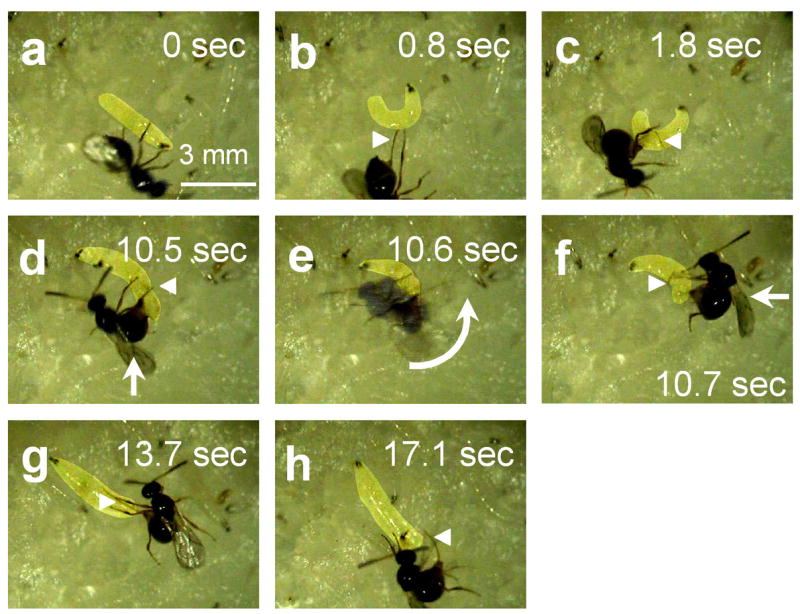Figure 6.

Rolling behavior allows Drosophila larvae to escape from parasitoid wasp attack. Leptopilina boulardi female and an early third instar Drosophila melanogaster larva. (a) Wasp ovipositor penetrates larval cuticle and epidermis; (b) Nocifensive rolling behavior is triggered. The long threadlike ovipositor of the wasp is clearly visible (arrowhead). (c) Nocifensive rolling results in the ovipositor being wrapped around the larva. (d-f) Rolling of larva flips parasitoid wasp onto her side; (note that the image of the wasp in panel e is blurred due to its rapid movement during the exposure). (g) larva moves quickly away from parasitoid wasp; (h) larva is freed from ovipositor. Note: Images have been digitally adjusted to increase the contrast of the larva relative to the background (so that it could be easily seen). The original data can be seen in Supplementary Video 4.
